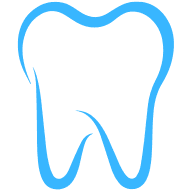4 Adaptations in Clinical Practice Due to Shifting Dentistry Trends
In the ever-evolving field of dentistry, professionals are constantly adapting to new trends and technologies. This blog post features insights from a Director and an Owner, giving readers a credible look into real-world adaptations. From adapting to implant-supported dentures to integrating digital technologies, experts share their first-hand experiences. The article presents a total of four expert insights, starting with adapting to implant-supported dentures and concluding with integrating digital technologies.
- Adapt to Implant-Supported Dentures
- Stage Care for Preventive Treatment
- Embrace Minimally Invasive Techniques
- Integrate Digital Technologies
Adapt to Implant-Supported Dentures
A turning point in my career was adapting to the growing demand for implant-supported dentures. Studies indicate that over 3 million people in the U.S. have dental implants, and this number is increasing by 500,000 each year. Patients are shifting towards implant-supported dentures; they want more stability, comfort, and a more natural feel that implants provide. Initially, I viewed this as a niche service, but it quickly became clear it was a transformative trend in prosthetic dentistry.
To meet this demand, I expanded my skill set, collaborating closely with oral surgeons to ensure seamless integration of the prosthetics. The process taught me the value of multidisciplinary care, as success relied on more than just denture design; it required a holistic approach to the patient's oral health. This experience shifted my perspective to see trends not as disruptions but as opportunities to elevate care. It reminded me that staying adaptable isn't just about technical skills; it's about staying in tune with the changing needs of our patients.

Stage Care for Preventive Treatment
The trend in the past was that we would treat patients for comprehensive care and present all a patient's full needs in one visit and then check the list off as a patient is treated. In today's immediate-gratification and insurance-driven world where there is a patient contribution to an insurance company, patients think that none or very little co-pay should be necessary to have vast care even in gross neglect situations. Unfortunately, a growing fraction of people seems more unwilling to pay for dental care than ever.
It is difficult to pay for what does not hurt. People have fewer savings than ever, statistically speaking. We are a socialized world for the working class. Insurance takes most expendable money up front (employers contribute or pay for the vast majority of employee benefits), and there is little left for patients to pay their portions. So, dentistry and often oral health continue to be left untreated until it is acutely needed with pain, infection, esthetic issues, or even if patients attend dental visits, they elect to not have full comprehensive care.
So what we do to help the patients who are newer to preventive care is list the next most urgent care only. By staging care, patients are less likely to get overwhelmed, get started on care, and at least suffer less tooth loss over a lifetime. Gums and foundation work need to be completed first. Then we move to the most urgent need. Third, we list all decay needs. Next, we revisit preventive options or if the patient has interest or needs in orthodontic treatment.
Embrace Minimally Invasive Techniques
As an experienced dentist with years of practice, I encountered a significant shift when cosmetic dentistry began trending toward minimally invasive techniques. Patients increasingly demanded treatments that preserved natural tooth structure while delivering aesthetic results. I adapted by embracing new materials and methods, such as composite bonding and no-prep veneers. Transitioning required extensive training to master these techniques while ensuring they met the same high standards as traditional procedures.
One specific instance was a patient who wanted to correct gaps and discoloration without the permanence of veneers. By offering composite bonding, I met her needs while preserving her natural teeth. The results were transformative, and her satisfaction reinforced the importance of aligning with evolving patient preferences. This change expanded my service offerings and attracted a younger, appearance-conscious demographic.
The experience taught me to view trends not as fleeting changes but as opportunities to grow and innovate. By staying adaptable and continually learning, I've found ways to deliver better care while remaining competitive in a fast-changing field.

Integrate Digital Technologies
There is an increasing trend in dentistry toward the adoption of digital technologies, such as intraoral scanners and digital X-rays. In response to this shift, we have integrated intraoral scanners into our workflows for clear-aligner treatments and dental crown procedures. This transition has enhanced our efficiency, improved the patient experience, and allowed us to leverage the latest advancements in dental technology. While not every trend proves beneficial, this particular advancement has compelled us to elevate our standards as providers, ultimately enhancing the patient experience.



